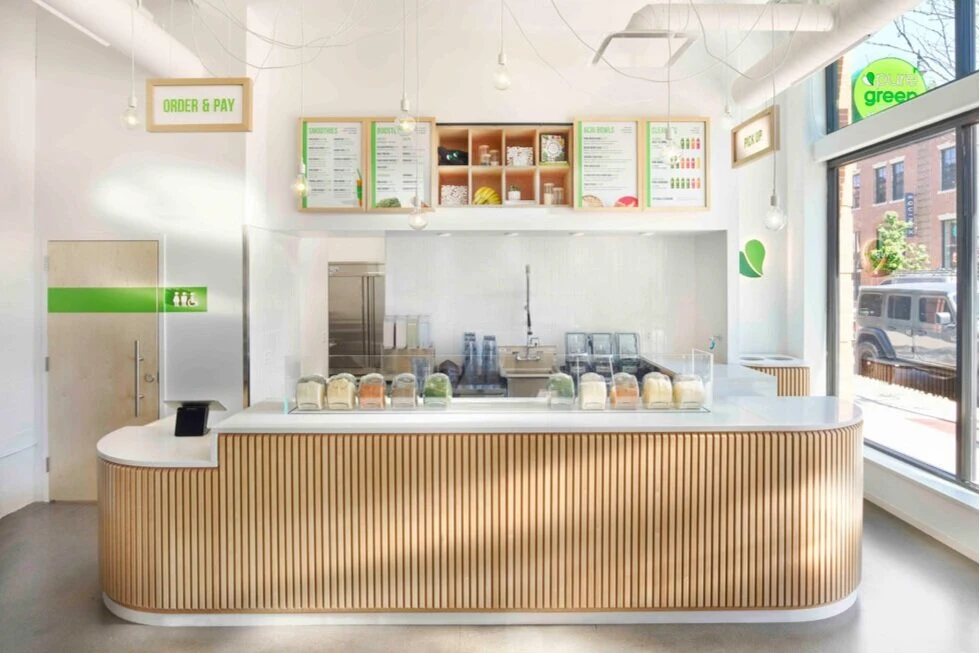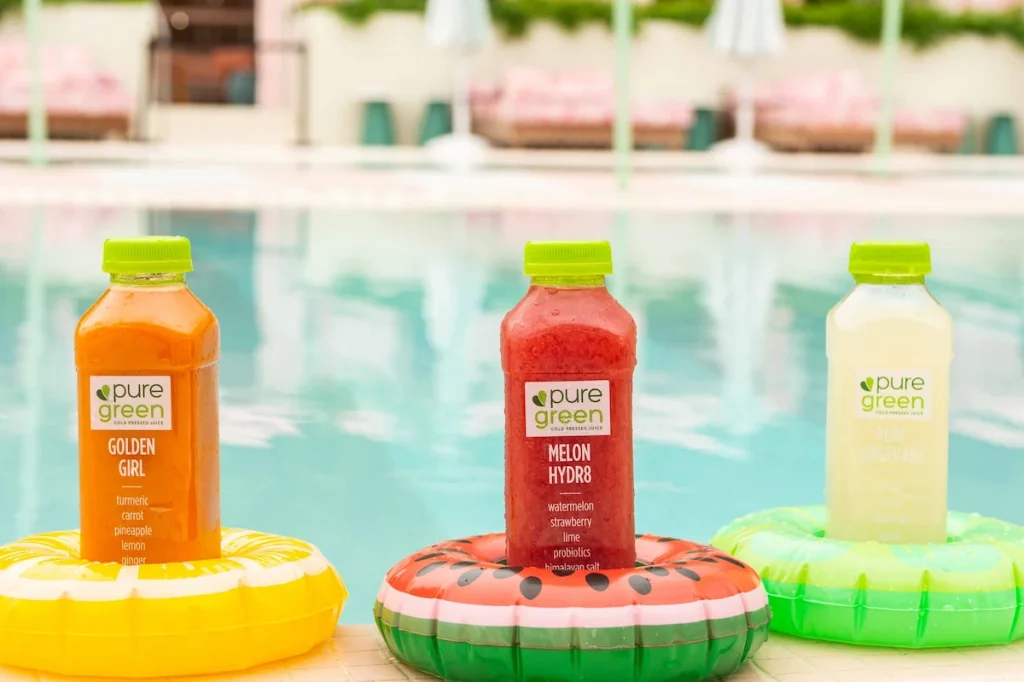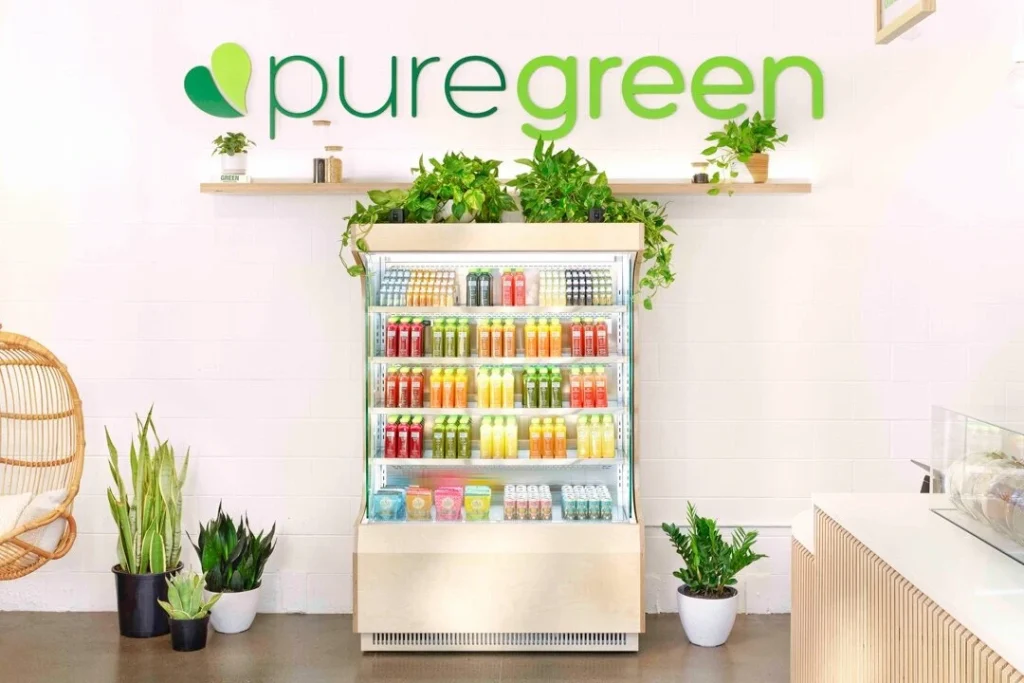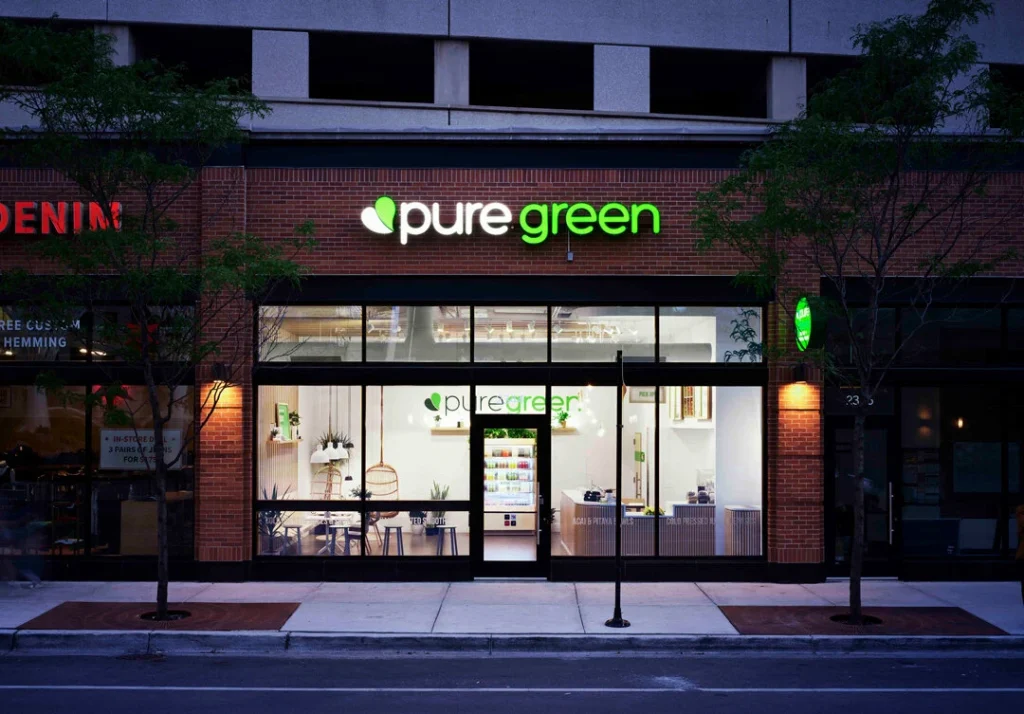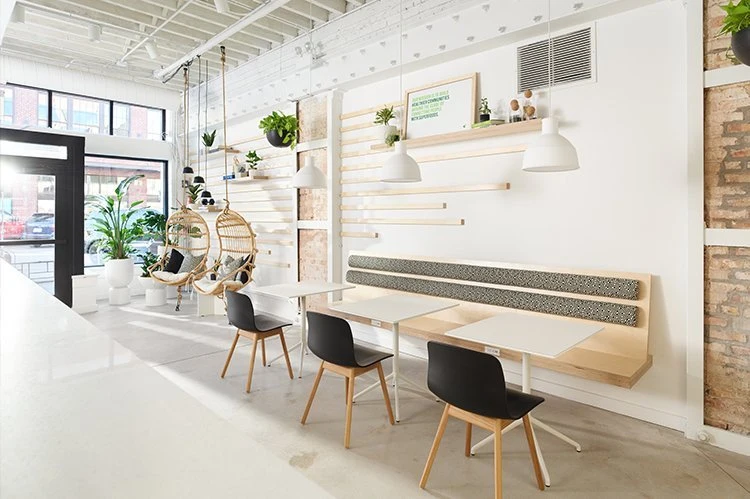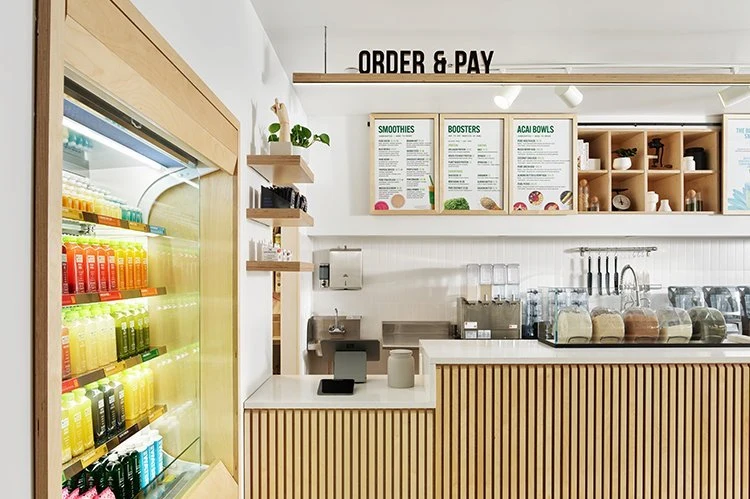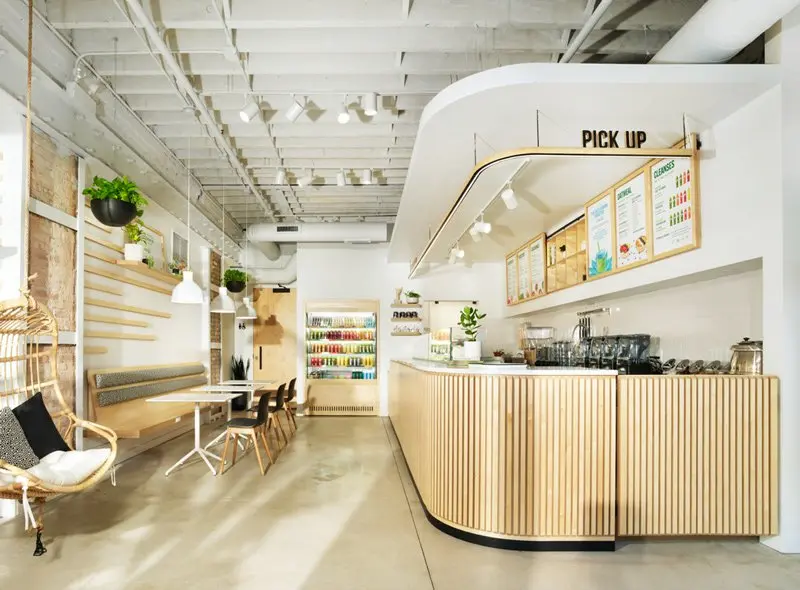Key Takeways
- Before launching your healthy food franchise location, the first thing you will need to do is take some time to understand how the franchise model actually works.
- The first thing you should consider when selecting a location is traffic. There are several different types of traffic you’ll want to consider, including foot traffic, public transportation, bike traffic, and car traffic.
- One of the great things about the franchise system is that you can immediately learn from your fellow franchisees.
- There are a lot of “basic” KPIs that are useful for pretty much every healthy food franchise owner.
With the start of the New year, people across the country are reevaluating their personal and professional goals. For many people, this includes looking for opportunities to start a business they can be proud to call their own.
Of course, as you will quickly, find, there are many different ways to start a successful business—that means being in tune with your local market and understanding what people are currently demanding. And as data continues to demonstrate, the American public is continually looking for healthy food options, such as smoothies, cold press juices, acai bowls, and more.
Opening a healthy food franchise location is one of the most effective ways to establish yourself as a successful business owner. The combination of low overhead, high demand, and efficient cash flow cycles all combine to make this unique, profitable opportunity.
Furthermore, by utilizing the franchise model, you will be able to immediately access a wealth of valuable resources. This can include resources such as marketing and branding support, legal and accounting support, connection to an already-developed network of suppliers, and more. Without access to these resources, aspiring healthy food restaurant owners would have to develop their own systems from scratch.
Unsurprisingly, the franchise model is extremely popular within the broader healthy food industry. In fact, a majority of new healthy food restaurants will organize as franchise locations.
Keeping these things in mind, you might be considering opening a healthy food franchise location of your own. But before you do, you’ll want to be sure to complete each of these twelve very important steps.

1. UNDERSTAND THE FRANCHISE MODEL
Before launching your healthy food franchise location, the first thing you will need to do is take some time to understand how the franchise model actually works. This will help make it much easier to determine whether establishing a franchise will be in your best interest.
All franchises will operate with two primary parties: the franchisor and the franchisee. The franchisor (such as Pure Green) is the “face of the franchise.” The franchisee, which is often an individual owner, will pay the franchisor a nominal fee in order to gain access to the brand, infrastructure, and other valuable resources. The franchise model is especially beneficial within the food industry, where branding and supply chain management are both extremely important.
2. Find a Compatible Franchise Partner
At this point, the idea of opening a healthy food franchise location probably sounds pretty appealing. But there are still a lot of important decisions that will need to be made! Specifically, whether you want to sell juice, smoothies, or any other type of healthy food, you will need to find a franchise partner (franchisor) that is compatible with your current needs.
Start by doing some market research and see how demand for the product has recently changed. One of the reasons that Pure Green has established itself as a successful franchisor is because the demand for smoothies and related products has consistently increased, year-over-year.
In addition to confirming there is adequate demand for the product, you should also take some time to learn more about the franchise operates. If you haven’t already, start by visiting a nearby location. Take note of how many people are there, your experience, and how various branding elements are incorporated. And, if possible, it might even be a good idea to try to speak with the manager and/or owner.
3. Organize Your Finances
Knowing how to effectively organize and manage your finances is a crucial component of running any business, whether it is in the health food industry or anything else. Even if you are using a relatively affordable franchise model, like the one that is currently offered by Pure Green, you will still need to have a base capital stack.
If you can’t find the financing you need to cover the initial franchise fee, there will usually be several financing options available. But in any case, knowing exactly how much capital you have, creating an initial budget, and also minimizing financing costs (such as interest expenses) can help you get pointed in the right direction before opening up a healthy food franchise location.



4. Choose a Desirable Healthy Food Franchise Location
Since your healthy food franchise location will require a great food traffic to operate, it is important to realize that location truly matters. After all, the location will—undoubtedly—affect how many people are able to access your health food restaurant and will also affect how many people even know it exists in the first place.
The first thing you should consider when selecting a location is traffic. There are several different types of traffic you’ll want to consider, including foot traffic, public transportation, bike traffic, and car traffic. Ideally, you will be located in a spot that has each of these types of traffic at once. However, the Pure Green team believes it is especially important to be located where there is lots of foot traffic and non-car traffic, especially due to the nature of the healthy foods market as a whole.
You’ll also want to choose a spot with adequate store frontage and high visibility. If you have the time, it might be worth checking out three or more potential spots before making a final decision.
5. Connect and Develop Your Support Network
Even if you are the sole owner of your healthy food business, it’s important to remember that nobody makes it entirely on their own. In order to succeed, you are going to need a consistent network of support—that’s one of the main reasons you decided to go with the franchise model in the first place.
Rather than waiting until something happens—say, a problem with bookkeeping, a lawsuit, etc.—establish connections as soon as you possibly can. If you have an accountant or a lawyer that you know you’ll be able to call, then managing your business will be significantly less stressful.
6. Use Franchise-Specific Data for Guidance
One of the great things about the franchise system is that you can immediately learn from your fellow franchisees. For example, suppose you are running a smoothie restaurant. Do you know how many pineapples you’ll need to buy off the bat? What about apples, bananas, and even napkins?
If you are starting from scratch, the best you can do is guess. But if there is another, comparable healthy food franchise location you can model your initial inventory off of, then your inventory estimates will be much more accurate. This will help you avoid wasting food while also building your bottom line.
7. Start Building a Reliable Team
When the job market appears to be ripe with potential workers, it can be tempting to delay the interview and hiring processes. But if you are opening a new franchise location from scratch, it is critical to ensure that everyone is fully ready to go from day one.
As soon as you have picked an official launch date, it is a good idea to begin looking for your team. This will give you more time to explore your options and, just as importantly, ensure that everyone is a great fit. Furthermore, starting early on will also give you more time for training.

8. Stress Test Your Supply Chains
In an era plagued by supply chain issues—which can be difficult for any company that is relying on fresh fruits and produce—stress testing your supply chains is more important than ever before.
What does it mean to stress test your supply chain? In this instance, “stress testing” involves seeing how your business might be affected by sudden supply chain challenges. For example, suppose there was some sort of crop outbreak and the cost of carrots doubled overnight. How would that affect your bottom line? Would your once profitable carrot juice suddenly become unprofitable? Furthermore, do you have a plan in place for when these sorts of events occur?
9. Prepare for Your Grand Opening
The grand opening of your healthy food franchise location is sure to be an exciting event. But it is also an event that can be stressful, meaning you will want to do everything you can to prepare in advance.
Luckily, if you work with a proven and experienced franchise partner like Pure Green, preparing for your opening day should be significantly easier. Pure Green offers a lot of different elements of support, including helping you better manage your starting costs (including creating a financial plan), providing you with introductory pricing models and marketing materials, and more.
By effectively advertising your big event, you’ll be much more likely to have an initial stream of customers. People like to see new things open in their neighborhood and will be very willing to come check your location out—you just need to make sure they hear about the event!
10. Identify Measurable KPIs
In every industry, developing a robust and consistent set of key performance indicators (KPIs) will help you better quantify your business’ overall performance. Any business that fails to use KPIs will simply be guessing whether they are moving in the right direction.
There are a lot of “basic” KPIs that are useful for pretty much every healthy food franchise owner. For example, seeing your total sales and total revenues increase each month will almost always be a positive sign. But there are also some industry-specific KPIs you’ll want to account for as well. For example, what percent of fresh fruit ended up being thrown away? Finding ways to tweak and improve upon these sorts of numbers can make a major difference.



11. Plan Your Next Step(s) Forward
Keeping in mind the importance of your grand opening (mentioned above), it can be tempting to get tunnel vision and focus only on that event. However, no matter where you are in the broader business cycle, it will always be beneficial to have a long-term vision and to continue developing your long-term goals.
Start by asking yourself a simple question: what would my next move be if I were to have the absolute best year possible? For example, suppose you hope to generate $700,000 in sales (fairly typical for Pure Green partners) but end up generating more than $1 million. What would you do with the unexpected surplus cash?
The “right” answer to this question will vary by situation. For a lot of healthy food franchise owners, it might mean opening up a second location. For others, it might mean giving the hard-working team some bonuses and also bolstering the cash reserve. And for others, it might involve all of the above. In any case, by developing a clear vision early on—even if it’s before your grand opening—you’ll be much more likely to actually achieve it.
12. Don’t Be Afraid to Make Changes
Businesses that last are the ones that are able to adapt to a rapidly changing environment—that’s just survival of the fittest. So while having both short-term and long-term plans will be very important, being able to pivot when a sudden challenge emerges will also be crucial for ensuring your long-term success.
This is yet another area where having a time-tested, market-tested, and readily-available franchisor can make a difference. When you work with a franchisor—whether it is a healthy food franchise or any other type of franchise—you effectively have insurance against the future unknown. Quality franchises like Pure Green were able to navigate unprecedented changes in the market (COVID, inflation, etc.) because they have the resources and commitments needed to keep their franchisees afloat.
In the end, there are a lot of things you’ll want to think about before you open a healthy food franchise location. But by keeping these 12 tips in mind, you can set yourself—and your valued team members—up to thrive.
